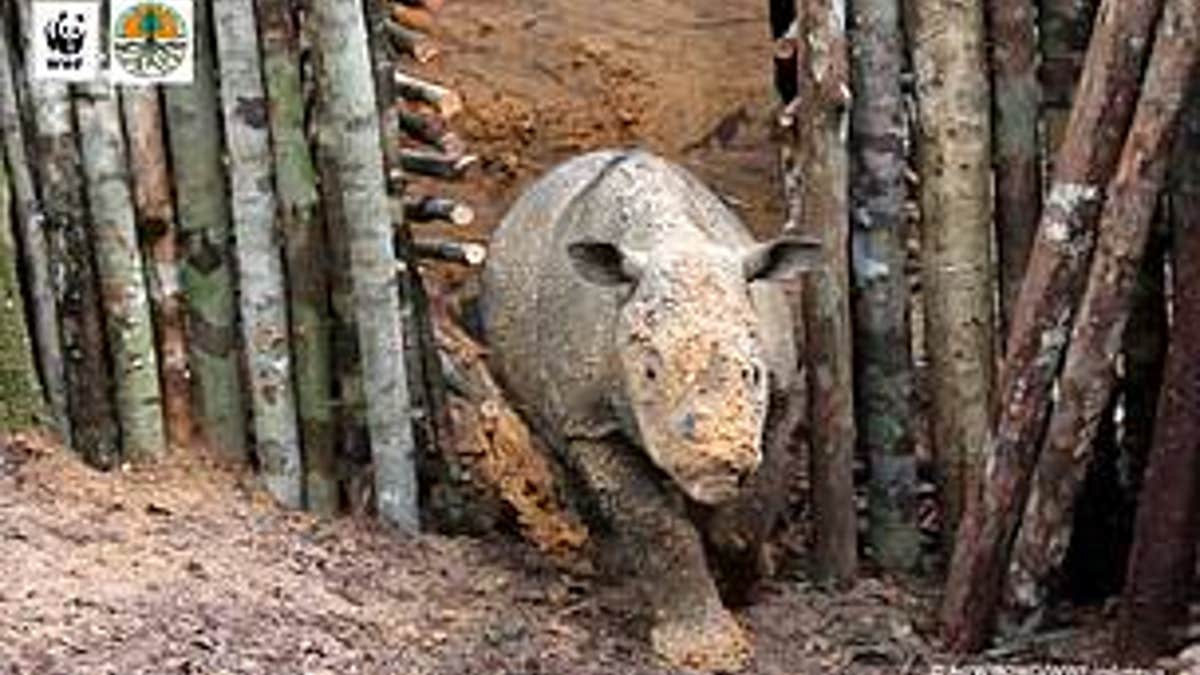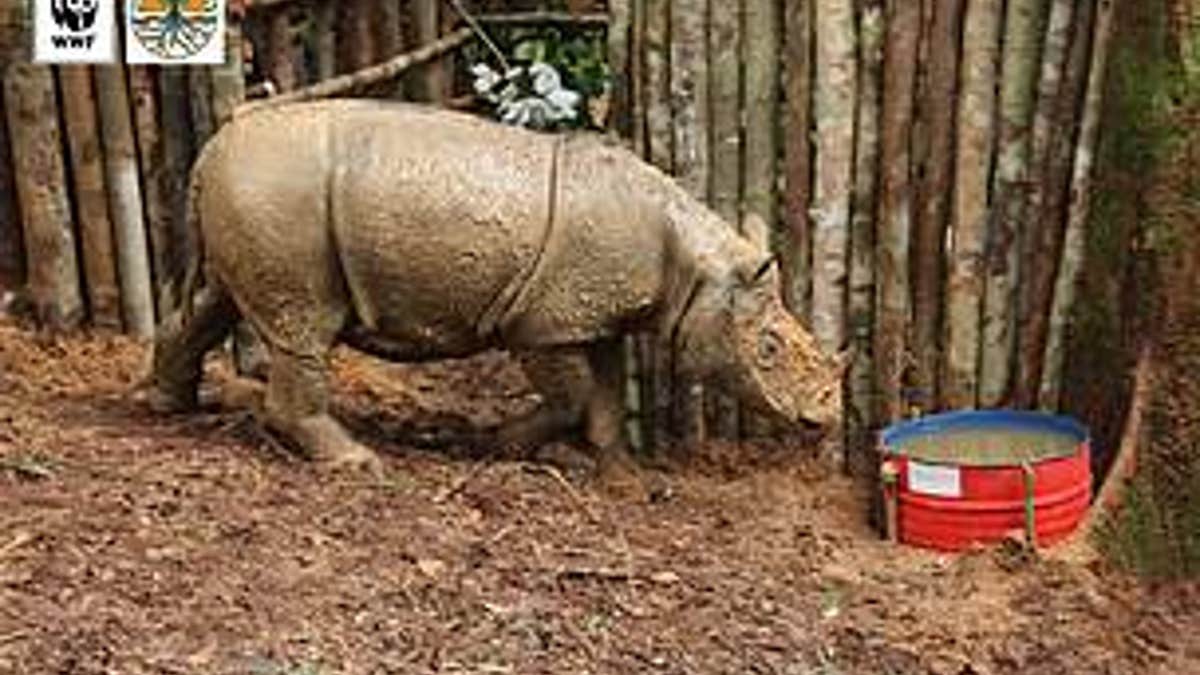
The rare Sumatran rhino (Ari Wibowo / WWF-Indonesia)
A live sighting of a rare Sumatran rhino in the Indonesian part of Borneo has delighted conservationists, marking humans' first physical contact with the species in the area for over 40 years.
The sighting in an area where the rhinos were thought to be extinct sparked celebrations at the World Wildlife Fund, according to a statement released Tuesday. The female Sumatran rhino, estimated to be between four and five years old, was captured in a pit trap in Kutai Barat in East Kalimantan on March 12, the WWF said.
Related: Cute zoo babies
There are only an estimated 100 Sumatran rhinos still in the wild, mainly on the island of Sumatra.

The Sumatran rhino was captured on March 12. (Ari Wibowo / WWF-Indonesia)
A WWF survey team first found evidence that the species was not extinct in Kalimantan after they identified footprints and captured a photo of a rhino in the same forest. Some 15 Sumatran rhinos were subsquently identified in three populations in Kutai Barat.
Related: Record 16-foot python among
2,000 pounds of snakes recently bagged in southwest Fla.
The captured rhino is being held in a temporary enclosure before being relocated by helicopter to a protected forest about 93 miles from the capture site. The discovery is a huge milestone for conservationists in Indonesia, who plan to relocate at least three rhinos from their current habitats to this new location where they will be safer and researchers can establish a breeding population.

The Sumatran rhino sighting has delighted conservationists. (Ari Wibowo / WWF-Indonesia)
Threats to the rhinos include poaching and habitat loss due to mining, plantations and logging, the WWF said. Experts note that the wild population of Sumatran rhinos in the Malaysian part of Borneo was declared extinct last year.
Related: Rare whales make big showing in Cape Cod Bay
“This is a race against time for rhino conservation. Providing a safe
home is the only hope for the survival of the Sumatran rhino for many generations to come,” said Dr Efransjah, CEO of WWF-Indonesia. “WWF will work continuously with the Sumatran rhino conservation team for the protection of the Sumatran rhino population in Kalimantan.”
In another big win for rhino conservation, Indonesia recently announced an increase in the population of another type of rhino, the Javan rhino, which only survives in Ujung Kulon National Park in the Banten province of Indonesia.Three new calves brought the number of Javan rhinos up to 63, the WWF reports.
